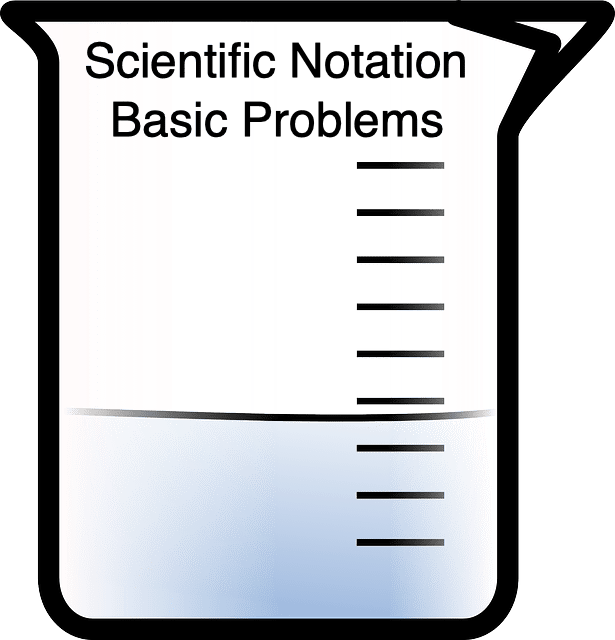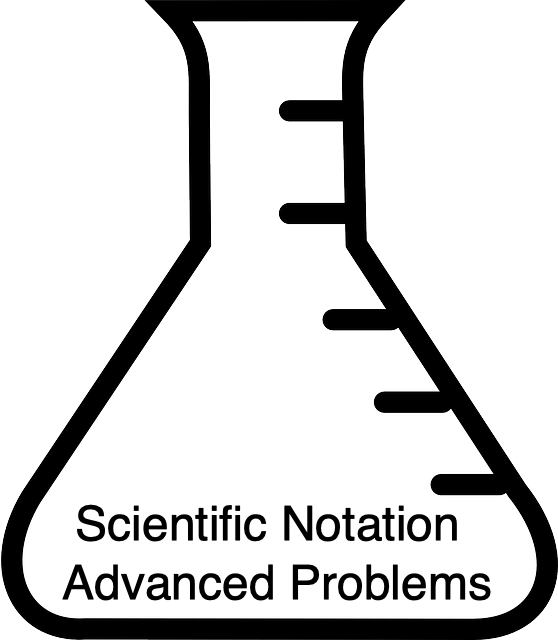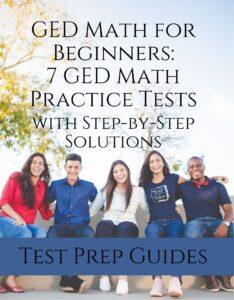For information on our book entitled GED Math for Beginners with Step-by-Step Solutions, please click on the image on the side of the page.
Our GED math book will guide you through all of the concepts that you need to know for the day of your GED math test.
For an explanation of the math skills that you will need to know for the exam, please scroll to the bottom of the page.
In the next section, we focus on three of the types of GED math questions for which beginners may need the most help and support: combinations, permutations, and scientific notation.
Combinations

How many 2 letter combinations can be made from the letter set:
Q E I O U?
A) 5
B) 10
C) 40
D) 120
The correct answer is B. To determine the number of combinations of S at a time that can be made from a set containing N items, you need this formula:
(N!) ÷ [(N – S)! × S !]
In our question, S = 2 and N = 5 (because there are five letters in the set). When you see the exclamation mark in a question, you are being asked to calculate a factorial. To solve a factorial, you need to multiply the number provided by every positive integer less than it. You can see an example of how to deal with factorials in the example that follows. So, substitute the values for S and N in order to solve the problem:
(5 × 4 × 3 × 2 × 1) ÷ [(5 – 2)! × (2 !)] =
(5 × 4 × 3 × 2) ÷ [(3 × 2 × 1) × (2 × 1)] =
120 ÷ 12 = 10
Permutations

How many 4 letter permutations can be made from the letter set:
Z C K W Y?
A) 120
B) 100
C) 60
D) 9
The correct answer is A. Permutations are like combinations, except permutations take into account the order of the items in each group. For permutations of S at a time from a set containing N items, use the formula:
N! ÷ (N – S)!
For the question above, N = 5 and S = 4, because we have five items in the set at we are creating permutations of 4. In order to calculate the number of permutations of size S taken from N items, you should use this formula: N! ÷ (N – S)!
So, substitute the values into the formula and write out your factorial in order to find your answer.
N! ÷ (N – S)! =
(5 × 4 × 3 × 2 × 1) ÷ (5 – 4) =
(5 × 4 × 3 × 2) ÷ 1 =
120 ÷ 1 = 120
Scientific Notation – Basic Problems

Express the following number in scientific notation: 19,875.246
A) 1.9875246 × 103
B) 1.9875246 × 104
C) 1.9875246 × 105
D) 1.9875246 × 106
The correct answer is B. This is a practice question on scientific notation. In scientific notation, you need to remember to multiply by a power of 10. For example, the number 635,000 is written in scientific notation as 6.35 × 105. The first step is to move the decimal point to the left, and then count the number of places to the right. The amount of decimal places that you move is the same number that you use for your exponent.
Remember that the number with the exponent on it has to be 10. So, we have to move the decimal four places to the left to get 1.9875246. Since we have moved the decimal four places, we use 4 as our exponent: 1.9875246 × 104
In other words, you can check your work as follows: The exponent correlates to the amount of zeroes that are to be placed after the 1 when we multiply the power of ten.
104 = 10 × 10 × 10 × 10 = 10,000
1.9875246 × 10,000 = 19,875.246
Scientific Notation – Advanced Problems

Simplify the following and express in scientific notation:
(3.58 × 107)(2.17 × 104)
A) 7.7686 × 1011
B) 77.686 × 1011
C) 7.7686 × 1010
D) 77.686 × 1010
The correct answer is A. When you multiply like this, you have to multiply the numbers in front of the times signs and add the exponents as shown below.
(3.58 × 107)(2.17 × 104)=
(3.58 × 2.17)(107 × 104) =
7.7686 × 107 + 4 =
7.7686 × 1011
GED Math Quizzes for Beginners
Try the math quizzes below, which will help you practice the math skills that you need for your test.
Get ready to ace your GED exam with GED Math for Beginners by Test Prep Guides!
GED math test: Topic review for beginners
There are three types of questions on math section of the GED exam:
(1) quantitative problem solving with rational numbers; (2) quantitative problem solving in measurement; and (3) algebraic problem solving with expressions and equations.
Each of the subsections below describe the math question types in more detail.
Quantitative Problem Solving with Rational Numbers
These types of questions cover arithmetic skills with real numbers. It includes basic math problems that many students find the easiest to solve. The following concepts are included:
Numerical operations; Decimals, fractions, and percentages; Rate, Ratios, and Proportions; Mixed Numbers; Price per Unit, Markup and Discounts; Reverse Calculations and Correcting Erroneous Calculations; Place value; Greatest Common Divisors; Sequences and Patterns
Quantitative Problem Solving in Measurement
This area includes plane and coordinate geometry, as well as making conversions or comparisons of measurements. The following skills are assessed:
Linear distance; Weight per Unit; Rectangular Area; Midpoint Formula; Distance Formula; Slope; X and Y Intercepts; Triangle Area & Pythagorean Theorem; Circle Area, Radius, Diameter, and Arcs; Perimeter and Area of Rectangles; Cubes, Spheres, Cylinders, and Cones
Algebraic Problem Solving with Expressions and Equations
Problems in this area include algebra and statistics skills, such as:
Mean, Median, Mode, and Range; Probability; Square Roots; Exponents; Rational Expressions; Polynomials & Quadratics; Systems of Equations; Solving by Elimination; Functions
GED English Language Arts
You may also want to try the following quizzes for the English part of the GED test:
Essay Writing Help for the GED
NOTE: The GED is a registered trademark of GED Testing Service LLC, which is not affiliated with nor endorses this publication or webpage.
